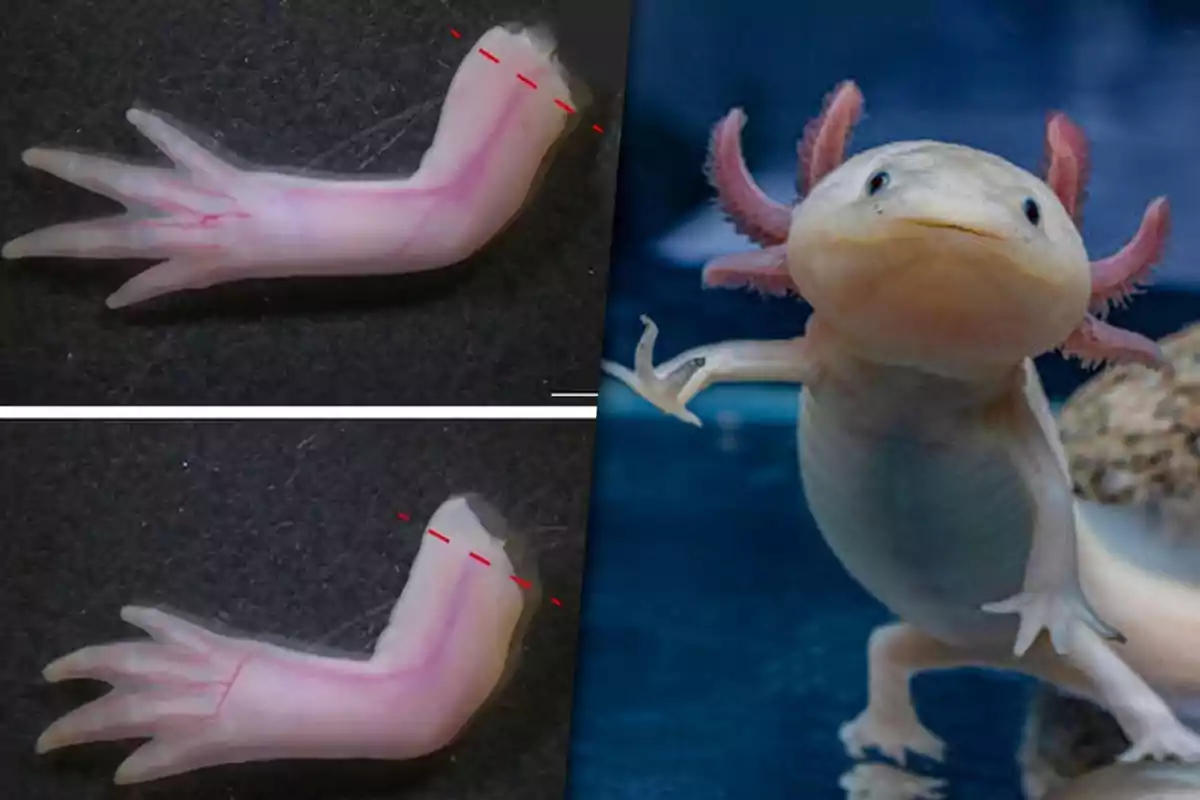
They reveal how the axolotl regenerates its body and why this is important for humans.
Scientists have discovered how the axolotl decides whether it should regenerate a hand or an entire arm, and the information is surprising
A team of scientists found the key mechanism that allows this Mexican salamander to reconstruct anything from a hand to an entire arm.
The discovery could mark a turning point in regenerative medicine applied to humans.

How does the axolotl know which part of the body to regenerate?
The axolotl (Ambystoma mexicanum) is known for its ability to regenerate limbs, internal organs, and even the spinal cord.
The surprising thing is not only that it can do this, but that it knows which part to reconstruct depending on where it was amputated.
The role of retinoic acid
For years, it was known that retinoic acid (RA) told cells whether they should form a shoulder or a wrist.

However, a new study revealed that the key is not how much RA is produced, but rather how quickly it degrades.
The discovery: the chemical gradient that guides regeneration
The team at Northeastern University discovered that:
- In distal areas (such as the wrist), there is a high concentration of an enzyme called CYP26B1, which destroys retinoic acid.
- In proximal areas (such as the shoulder), that enzyme is almost absent, so RA accumulates.
- This creates a chemical gradient that acts like a GPS so cells know which part of the body to regenerate.

What is the blastema?
It is a group of stem cells that forms at the wound and organizes the entire regeneration process.
Its formation is key, but in humans this window of plasticity is closed.
Manipulating the process: tricking the cells
To test their theory, the team conducted an experiment:
- They amputated axolotl legs at the wrist.
- They applied talarozole, a drug that blocks the CYP26B1 enzyme.
- Retinoic acid accumulated and the cells "thought" they were at the shoulder.
- Instead of regenerating only the hand, they created a duplicated limb.

"We tricked them and it worked"
"It was the definitive test," said researcher James Monaghan. "The cells recaused a complete limb where there should have been only a hand."
Shox: the architect gene of bones
Retinoic acid doesn't act alone. The team identified that it activates a gene called Shox, responsible for building proximal structures such as the humerus and forearm.

When they eliminated that gene with CRISPR-Cas9, the axolotls developed normal hands but underdeveloped arms.
What does this mean for regenerative medicine?
According to Monaghan, this is not about a magic gene. Humans and axolotls share the same genes, but:
- In axolotls, injured cells return to an embryonic state.
- In humans, those cells form scars.
If we manage to induce the formation of a blastema in humans, we could transform scarring into regeneration.
More posts: